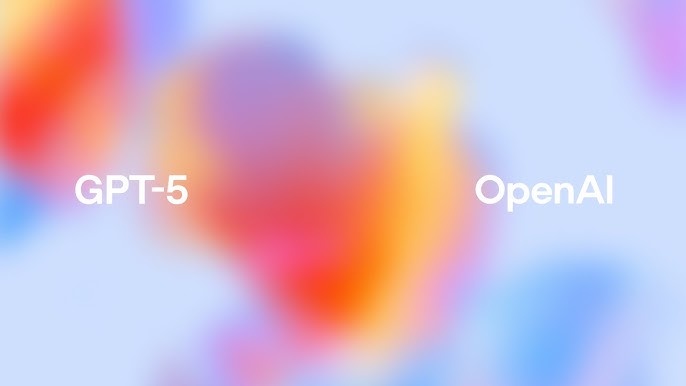OpenAI Unveils GPT-5
OpenAI launched GPT-5, its most advanced AI model, outperforming previous versions in accuracy and reasoning, amid growing competition and challenges like cybersecurity breaches and geopolitical concerns impacting tech industry leadership.
LLMAIARTIFICIAL INTELLIGENCETECHNOLOGY
Eric Sanders
8/8/20253 min read


OpenAI's GPT-5 Released for Public Use
OpenAI’s latest release, GPT-5, has been released for public use. Their model continues to improve and raise the bar for accuracy and reasoning in AI technology. Behind the promise lies OpenAI's larger story: a high-stakes struggle for dominance among fierce competition, cybersecurity threats, and geopolitical challenges that threaten to reshape the tech industry’s landscape.
GPT-5’s Unmatched Capabilities
It’s easy to take incremental progress in AI for granted when you’re used to hearing about new “versions” every few months. But GPT-5 is different. According to OpenAI insiders, it far outperforms its predecessor not only in raw accuracy but, crucially, in understanding and applying reasoning, a notoriously difficult hurdle for AI to master.
Prrevious GPT models impressed with their ability to spit out human-like text, but they often faltered when confronted with complex logic, nuanced instructions, or abstract problem-solving. GPT-5 changes that narrative.
- Improved accuracy: The model delivers responses that are more factually reliable, closing gaps that earlier versions left open.
- Enhanced reasoning: GPT-5 processes multi-step problems and subtle concepts with a sophistication unseen before.
- Broader applications: From technical writing and coding to legal analysis and creative ideation, GPT-5’s capacity stretches much further.
OpenAI’s CEO emphasized, “This isn’t just about bigger datasets or more parameters. It’s a fundamental upgrade in how AI thinks.” This statement captures a breakthrough that feels less like an algorithmic tweak and more like a step toward genuine machine intelligence.
Innovation Amidst Rising Threats
As impressive as GPT-5’s technical prowess is, the context in which OpenAI launches this behemoth reveals the deeper stakes. The AI space has become the high ground of tech rivalry, with companies racing to define the future’s rules. Here’s what intensifies the challenge:
- Cybersecurity risks: AI systems are prime targets for hacking, manipulation, or exploitation, and ensuring GPT-5’s integrity and safety is an ongoing battle.
- Geopolitical friction: With governments increasingly wary of AI’s strategic implications, regulatory scrutiny and international tensions are rising alongside innovation.
- Competitive pressure: Other tech giants and emerging startups are chasing similar advancements, creating an arms race for the smartest, most useful AI.
This confluence of opportunity and threat means OpenAI isn’t just releasing a product but that they’re placing a bet on their ability to steer AI’s trajectory in a way that benefits society, balances risk, and maintains leadership.
What GPT-5 Means for Daily Drivers
For everyday users and companies, the implications go beyond the technical specs. Here are several practical takeaways:
- More reliable AI assistants: Whether you’re a writer, developer, or analyst, GPT-5 raises expectations for AI’s consistency and usefulness.
- Smarter automation: Tasks requiring judgment, insight, or layered reasoning can now be partially or fully automated with higher confidence.
- Ethical considerations: With greater power comes increased responsibility. Users and creators will need to navigate the ethical landscape carefully, given how advanced AI-generated content can influence public opinion or decision-making.
In fact, OpenAI highlighted that GPT-5 includes stronger guardrails to prevent harmful outputs, a crucial step as AI interacts more deeply with real-world information and decision processes.
How to Stay Ahead in AI’s New Frontier
If GPT-5 illustrates where AI is headed, the story around it offers lessons for anyone engaging with technology today:
- Invest in continuous learning: AI’s pace of change demands staying informed—not just superficially, but understanding underlying capabilities and limitations.
- Prioritize cybersecurity: With increased AI integration, securing data and models is not optional but foundational.
- Engage ethically: Awareness of how AI shapes narratives and decisions is imperative for responsible use.
- Be adaptive: No matter your industry, the ability to adapt workflows and mindsets to incorporate AI breakthroughs will separate leaders from laggards.
In practical terms, this means not just using AI tools but cultivating an ecosystem where humans and machines complement each other’s strengths.
What’s Next for AI and Us?
So, looking ahead, I want you to consider this: how will you harness the power of AI models like GPT-5? Will you be a passive consumer of automation, or an active participant shaping AI’s impact on your work and society? When technology reaches this kind of sophistication, the question isn’t just what AI can do but what we decide it should do.
And finally, as we stand at this crossroads, ask yourself: How do we ensure that the smartest machines serve the smartest intentions?
Efficiency
Transform your workflows and reclaim your time.
Contact Us
Need A Custom Solutions? Lets connect!
eric.sanders@thedigiadvantagepro.com
772-228-1085
© 2025. All rights reserved.
